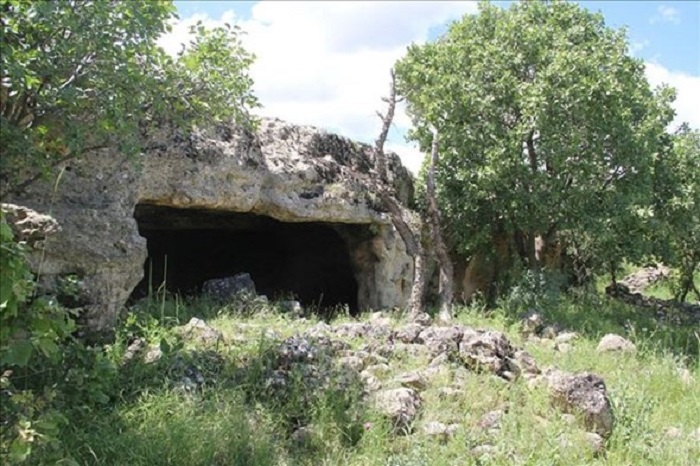The Role of Culture and Tradition in Shaping Identity: The Case of the Assyrians and Mhalmoye
The Mhalmoyto Region (Ahlamu or Beth-Ahlam — ܒܝܬ ܡܚܠܡ ) is the name of the area in the western part of Tur ‘Abdin. Its inhabitants are called Mhalmoye, Mahalmi, or Mhallami. In this series Denho Bar Mourad takes us on a historical journey through this ancient Syriac region.
By Denho Bar Mourad-Özmen | Journalist and Moderator at Suroyo TV
For stateless and often displaced peoples like the Assyrians and the Mhalmoye (Arabic: Mahalmi, Mhalmi), culture and tradition serve not only as identity markers but also as survival tools. These communities, originating from ancient Mesopotamia and Southeastern Turkey respectively, have faced centuries of persecution, forced migration, and assimilation pressures. Despite this, they have preserved a rich cultural heritage through tradition, language, folklore, and music. This article explores how these elements shape and maintain the identity of the Assyrian and Mhalmi peoples in the face of diaspora and historical trauma.
Cultural Foundations of Identity
The Assyrian identity is rooted in one of the world’s oldest civilizations, tracing back over 4,000 years to the Assyrian Empire of Mesopotamia. Their culture includes the Aramaic language (a descendant of ancient Akkadian), Christian faith (primarily Syriac Orthodox, Chaldean Catholic, and Assyrian Church of the East), and deep ties to ancestral lands in Iraq, Syria, Turkey, and Iran.
The Mhalmoye, a distinct group from the Tur Abdin region in southeastern Turkey, share linguistic and cultural ties with both Kurdish and Assyrian traditions. Many identify as Muslims but preserve cultural links to Syriac Orthodox Christian ancestry and Mesopotamian heritage, creating a complex and layered identity.
For both groups, culture becomes a form of resistance. In diaspora communities, preserving language, cuisine, crafts, and religious customs helps sustain identity across generations. Cultural associations and digital platforms play a central role in this transmission.

Tradition: A Link to Ancestry
Traditions such as Assyrian New Year (Akitu), wedding ceremonies, and religious festivals serve as living links to the past. For the Assyrians, liturgical rituals in classical Syriac connect present-day believers to early Christian practices. Similarly, the Mhalmoye maintain oral traditions and customs related to family, community hierarchy, and seasonal observances.
These traditions not only preserve history, they unify fragmented communities in exile. In cities like Södertälje in Sweden, Chicago in the USA, and Berlin in Germany, traditional gatherings and diasporic rituals help reinforce identity and foster solidarity.
Living Conditions: Displacement and Adaptation
Both Assyrians and Mhalmoye have experienced dramatic changes in living conditions due to political instability, ethnic cleansing, and forced migration. The Assyrian Genocide (Sayfo) during World War I, the Iraq War (2003), and the rise of the Islamic State (ISIS) displaced hundreds of thousands. Mhalmoye have also faced marginalization in Turkey and Syria, prompting large-scale migration to Europe.
These conditions have reshaped their identities. In host countries, younger generations often grow up navigating multiple cultural realities. Integration pressures, language loss, and generational gaps pose challenges, but also opportunities for redefinition and resilience.
Also read: The Mhalmoyto Region: Common Traditions and Rites between Christian and Muslim Mhalmoye in Habses
Folklore: Carriers of Collective Memory
Assyrian and Mhalmi folklore are rich with legends, proverbs, and epic tales that reflect historical experiences, moral teachings, and communal values. These stories serve as vehicles for collective memory, encoding narratives of survival, heroism, and longing for homeland.
Assyrian folktales often revolve around village life, martyrdom, and Christian saints, while Mhalmi oral history includes tales of migration, honor, and borderland resilience. These stories are passed down through storytelling evenings, poems, and increasingly, social media and diaspora publications.

Songs: Expressions of Exile and Belonging
Music holds a central role in the identity of both Assyrians and Mhalmoye. Assyrian songs often express themes of exile, nostalgia, and faith. Artists like Sargon Gabriel and Linda George have preserved the Assyrian soul through music, blending traditional instruments with modern arrangements. Lyrics in Sureth (Neo-Aramaic) evoke deep emotional resonance among listeners who feel disconnected from their ancestral homelands.
Similarly, Mhalmi musical traditions, though less documented, include folk songs sung in Arabic, Kurdish, or Turkish dialects, reflecting their diverse heritage. These songs often focus on love, migration, and collective struggle. In diaspora settings, music becomes a vital tool for cultural education and community cohesion.
Conclusion
For marginalized and dispersed peoples like the Assyrians and Mhalmoye, identity is not a passive inheritance, it is a conscious, ongoing act of preservation and adaptation. Culture, tradition, living conditions, folklore, and music are the threads that hold these identities together, even as physical connections to homeland fade.
In honoring these elements, these communities not only resist erasure but also affirm their place in the global mosaic. The Assyrian and Mhalmi experiences exemplify how identity can be shaped, challenged, and yet endure; it can be rooted in the past, lived in the present, and evolve toward the future.
Denho Bar Mourad-Özmen is a former special educator and advisor at Sweden’s National Agency for Special Education. He is a lecturer, published educational films on Swedish TV, and has written articles in Swedish educational magazines. He was born in the village of Habses, Tur Abdin, and has written on the Syriac people for Hujada Magazine and the Syriac Orthodox Patriarchal Magazine. He is a long-time journalist and a moderator at Suroyo TV.
Other articles in this series: The Mhalmoye (ܡܚܠܡ̈ܝܐ): Who Are They? , Famous Mhalmoye of the Christian Era , The Mhalmoye (ܡܚܠܡ̈ܝܐ) and Their Conversion to Christianity , The Mhalmoyto: Its Cities, Villages, Monasteries, and Churches , Habses ܚܰܒܣܶܣ – an important village in the Mhalmayto Region (part I) , Habses ܚܰܒܣܶܣ – An Important Village in the Mhalmayto Region (Part II) , The Mhalmoyto City of Hesno d’Kifo ܚܣܢܳܐ ܕ ܟܐܺܦܳܐ , The Mhalmoyto City of Sawro ܨܰܘܪܐ , The Mhalmoyto Region: Common Traditions and Rites between Christian and Muslim Mhalmoye in Habses , The Mhalmoyto Region: Kfar Shomac ܟܦܰܪܫܳܡܰܥ Shorezbah ܫܳܪܶܙܒܰܚ and Estel ܐܰܫܬܠ , The Mhalmoyto Region: Macsarto (Ömerli), Beth Awe (Kayadere), and Harbtho d’Gargnose (Aliçli)
















